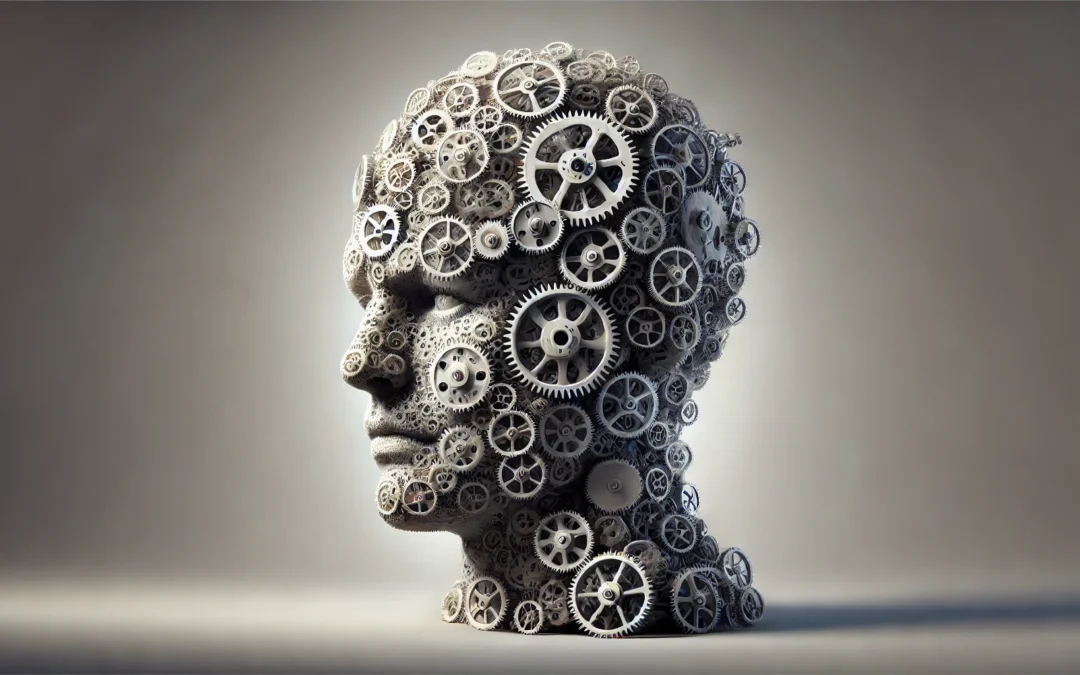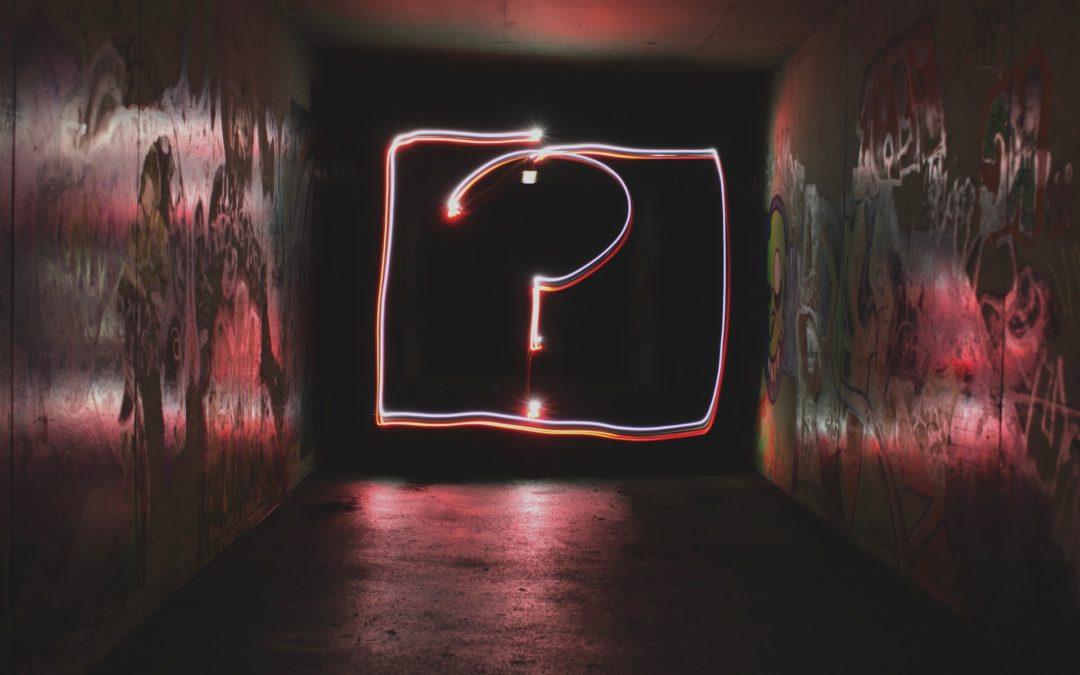Diving into the world of literature, we often encounter characters that leave a lasting impression, shaping our understanding of storytelling. Personas in literature serve as windows into the souls of characters, crafted meticulously by authors to evoke emotions, provoke thoughts, and breathe life into the narrative. This article shines a spotlight on the top 30 persona examples in literature, offering a deep dive into the creative minds that have sculpted these unforgettable figures. From the cunning wit of Shakespeare’s protagonists to the complex inner worlds of modern literary heroes, we embark on a journey through the annals of literary history to explore the essence of persona creation.
Understanding these personas is not just about recognizing a character’s role or analyzing their behavior; it’s about appreciating the artistry behind their development. Each example we’ll explore is a testament to the power of literature to mirror humanity, showcasing how authors use personas to reflect societal norms, challenge perceptions, and ultimately, connect with us on a deeply personal level. Whether you’re a literature aficionado, a budding writer, or simply someone who loves a good story, this exploration into literary personas promises to inspire and enlighten, opening new vistas of appreciation for the craft of storytelling.
Remarkable Examples of Personas in Literature
1. Holden Caulfield in “The Catcher in the Rye” by J.D. Salinger
Holden’s persona is that of a disillusioned teenage rebel, grappling with the phoniness of adult society and the pain of losing his younger brother. His candid, colloquial narrative voice captures the angst and alienation of adolescence, making him a compelling and relatable character for generations of readers. Holden’s desire to protect the innocence of childhood encapsulates the novel’s central theme.
2. Atticus Finch in “To Kill a Mockingbird” by Harper Lee
Atticus Finch serves as the moral backbone of Lee’s novel, embodying integrity, empathy, and the pursuit of justice. His persona is that of a wise, compassionate father and a steadfast lawyer who challenges the racial prejudices of the American South. Finch’s unwavering principles and his method of teaching his children to understand and respect others make him a timeless example of humanity and dignity.
3. Jay Gatsby in “The Great Gatsby” by F. Scott Fitzgerald
Gatsby’s persona is complex, embodying the American Dream’s promise and its ultimate emptiness. He is a self-made man who reinvents himself from poverty to wealth, driven by his love for Daisy Buchanan. Gatsby’s lavish parties and mysterious past captivate the novel’s narrator, Nick Carraway, and the reader, making him an unforgettable symbol of desire, illusion, and the pursuit of an unattainable dream.
4. Elizabeth Bennet in “Pride and Prejudice” by Jane Austen
Elizabeth stands out as a witty, intelligent, and independent-minded heroine in a society that values marriage and social status. Her persona challenges the norms of her time, displaying a sharpness of mind and a depth of character that endears her to readers. Elizabeth’s journey of self-discovery and her evolving relationship with Mr. Darcy showcase her as a timeless figure of feminist literature.
5. Sherlock Holmes in the Sherlock Holmes series by Sir Arthur Conan Doyle
Holmes is the quintessential detective, known for his brilliant deductive skills, keen observation, and aloof personality. His persona has become synonymous with detective fiction, inspiring countless adaptations and reinterpretations. Holmes’s methodical approach to solving mysteries, combined with his enigmatic character, continues to captivate audiences worldwide.
6. Frankenstein’s Monster in “Frankenstein” by Mary Shelley
This creature is not just a symbol of scientific overreach but a deeply complex persona grappling with his existence, isolation, and desire for companionship. Shelley’s novel explores themes of creation, responsibility, and the quest for understanding, with the monster’s tragic journey reflecting the human condition’s darker aspects. His eloquent speech and emotional depth challenge the stereotype of a mindless beast, making him a poignant figure of empathy and sorrow.
7. Hester Prynne in “The Scarlet Letter” by Nathaniel Hawthorne
Hester’s persona is that of a resilient and dignified woman who confronts the shame and stigma of adultery in a puritanical society. Her strength in facing public condemnation, along with her deep sense of morality and compassion, elevates her character beyond her “scarlet letter.” Hester’s evolution from a symbol of sin to a figure of grace and redemption highlights her as a powerful study in resilience and individuality.
8. Hamlet in “Hamlet” by William Shakespeare
Hamlet’s persona embodies the existential philosopher, torn between action and inaction, haunted by his father’s ghost and the moral corruption of his uncle’s court. His soliloquies reveal a mind wrestling with life’s big questions, making him a timeless figure of human introspection and complexity. Hamlet’s tragic quest for truth and justice makes him one of literature’s most enduring characters.
9. Lisbeth Salander in “The Girl with the Dragon Tattoo” series by Stieg Larsson
Lisbeth is a brilliant hacker with a complex past, marked by trauma and injustice. Her persona defies conventional norms—she is fiercely independent, socially awkward, and morally ambiguous, yet undeniably effective in her pursuit of justice. Salander’s character challenges traditional female roles in thriller and crime genres, making her a modern icon of resilience and intelligence.
10. The Cheshire Cat in “Alice’s Adventures in Wonderland” by Lewis Carroll
The Cheshire Cat’s persona is emblematic of the whimsical and nonsensical world of Wonderland. Known for its disappearing act and perplexing conversations with Alice, the cat embodies the illogical and the unpredictable. Its famous grin and philosophical musings on identity and reality offer a unique perspective on the world Carroll created, making the Cheshire Cat a memorable figure in the exploration of absurdity and logic.
11. Dorian Gray in “The Picture of Dorian Gray” by Oscar Wilde
Dorian Gray’s persona captures the obsession with youth and beauty in a society that prizes appearance over morality. His journey from innocence to corruption, mirrored by the changes in a portrait he keeps hidden, critiques vanity and the destructive pursuit of aesthetic perfection. Gray’s character serves as a poignant exploration of the duality of human nature and the consequences of living a life devoid of ethical boundaries.
12. Jane Eyre in “Jane Eyre” by Charlotte Brontë
Jane Eyre is the embodiment of resilience, self-respect, and moral integrity. Orphaned and mistreated in her youth, Jane’s persona develops through her unwavering sense of self-worth and her quest for love and belonging on her own terms. Brontë’s heroine breaks the mold of the Victorian woman, advocating for gender equality and personal freedom, making Jane an enduring symbol of feminist literature.
13. Hannibal Lecter in “The Silence of the Lambs” by Thomas Harris
Hannibal Lecter’s persona is chillingly complex, blending high culture and cannibalistic serial killing. His intellect, charisma, and cultured demeanor juxtapose his brutal crimes, creating a character that fascinates and horrifies in equal measure. Lecter’s refined taste and psychological insight make him a unique and unforgettable figure in the thriller genre.
14. Don Quixote in “Don Quixote” by Miguel de Cervantes
Don Quixote is the quintessential idealist, embarking on a quest to revive chivalry and bring justice to the world. His delusions of grandeur and noble deeds, often resulting in comedic misadventures, critique the romantic literature of Cervantes’ time. Quixote’s unwavering optimism and commitment to his ideals, despite the harsh realities of the world, make him a timeless figure of hope and imagination.
15. Ishmael in “Moby-Dick” by Herman Melville
Ishmael’s role as the narrator in “Moby-Dick” serves as the reader’s window into the obsessive quest for the white whale. His philosophical reflections on life, the sea, and humanity’s place in the universe elevate the narrative beyond a simple tale of adventure. Ishmael’s persona, with its introspective depth and quest for meaning, anchors the novel’s exploration of obsession, fate, and existential inquiry.
16. Katniss Everdeen in “The Hunger Games” by Suzanne Collins
Katniss Everdeen is a symbol of rebellion and resilience in the face of oppressive power. Her survival skills, quick thinking, and deep loyalty to her loved ones drive her to become the reluctant hero and face of the resistance. Katniss’s persona reflects contemporary themes of societal control, media manipulation, and the fight for justice, making her a relatable and inspiring figure for a modern audience.
17. Oedipus in “Oedipus Rex” by Sophocles
Oedipus’s persona is tragic and complex, embodying the themes of fate, free will, and the search for truth. His determination to save Thebes from a curse leads to the devastating discovery of his own guilt and fulfillment of a dire prophecy. Oedipus’s journey from pride to despair highlights the human condition’s vulnerability and the inexorable nature of fate.
18. Offred in “The Handmaid’s Tale” by Margaret Atwood
Offred’s persona represents the struggle for identity and autonomy in a dystopian society that reduces women to their reproductive functions. Her narrative voice, blending memories of the past with her present reality, captures the resilience of the human spirit in the face of oppression. Offred’s story is a powerful commentary on gender, power, and the fight for self-determination.
19. Leopold Bloom in “Ulysses” by James Joyce
Leopold Bloom’s day-long journey through Dublin serves as a modern odyssey, exploring themes of identity, alienation, and the mundane aspects of everyday life. Bloom’s introspective and compassionate persona, combined with Joyce’s stream-of-consciousness technique, creates a richly detailed and deeply human character. His ordinary experiences contrast with the epic scale of Homer’s “Odyssey,” making Bloom a quintessential figure of modernist literature.
20. Gandalf in “The Lord of the Rings” by J.R.R. Tolkien
Gandalf’s persona as the wise and powerful wizard guides the Fellowship with his knowledge and foresight. Representing the fight against darkness with wisdom and light, Gandalf’s character is central to the themes of courage, sacrifice, and the struggle between good and evil. His evolution from Gandalf the Grey to Gandalf the White symbolizes rebirth and hope.
21. Heathcliff in “Wuthering Heights” by Emily Brontë
Heathcliff’s persona is marked by intense passion and deep resentment, stemming from his troubled past and unrequited love for Catherine. His character embodies the destructive power of love and revenge, affecting everyone around him. Heathcliff’s complexity as a romantic hero and a villain challenges conventional morality and explores the depths of human emotions.
22. The Monster in “The Strange Case of Dr. Jekyll and Mr. Hyde” by Robert Louis Stevenson
Mr. Hyde represents the dark side of Dr. Jekyll’s personality, unleashed by a scientific experiment gone awry. His persona embodies the dual nature of humanity—the struggle between societal constraints and primal urges. Hyde’s actions and Jekyll’s subsequent torment explore themes of identity, morality, and the hidden selves we fear to reveal.
23. Winnie-the-Pooh in “Winnie-the-Pooh” by A.A. Milne
Winnie-the-Pooh’s persona is characterized by his simplicity, kindness, and childlike wonder. His adventures in the Hundred Acre Wood, along with his friends, explore themes of friendship, curiosity, and the joys of everyday life. Pooh’s straightforward and often philosophical approach to problems endears him to readers as a symbol of innocence and the essence of childhood.
24. Celie in “The Color Purple” by Alice Walker
Celie’s persona evolves from a life of suffering and oppression to one of empowerment and self-discovery. Through her letters, readers witness her transformation as she overcomes abuse, finds her voice, and establishes her identity. Celie’s journey is a powerful narrative of resilience, sisterhood, and the healing power of love and self-expression.
25. Big Brother in “1984” by George Orwell
Big Brother’s persona, though largely unseen, represents the oppressive surveillance and control of a totalitarian state. As the face of the Party’s propaganda, Big Brother symbolizes the loss of individual freedom and the pervasiveness of government power. His omnipresent image serves as a constant reminder of the dangers of authoritarianism and the importance of safeguarding personal liberties.
26. Emma Bovary in “Madame Bovary” by Gustave Flaubert
Emma Bovary’s persona is marked by her dissatisfaction with provincial life and her pursuit of romantic ideals, leading to her downfall. Her character explores the conflict between reality and fantasy, and the destructive consequences of living beyond one’s means in search of fulfillment. Emma’s tragic story critiques the limitations placed on women in the 19th century and the dangers of unattainable desires.
27. Pip in “Great Expectations” by Charles Dickens
Pip’s persona evolves significantly throughout Dickens’ novel, from an innocent and impressionable boy to a gentleman shaped by society’s values, and finally to a man of developed moral convictions. His journey is marked by his great expectations, which stem from a mysterious benefactor and his unrequited love for Estella. Pip’s character explores themes of social class, ambition, and the quest for personal growth, highlighting the complexities of human nature and the influence of external forces on one’s identity.
28. Rodion Raskolnikov in “Crime and Punishment” by Fyodor Dostoevsky
Raskolnikov’s persona is complex, embodying the turmoil of a man who believes he is above the law and can commit murder for a higher purpose. His intellectual arrogance and justification for his actions lead him into a psychological maze of guilt, paranoia, and existential dread. Raskolnikov’s internal conflict and eventual redemption explore the depths of human conscience, morality, and the possibility of spiritual renewal.
29. Sethe in “Beloved” by Toni Morrison
Sethe’s persona is marked by the scars of her past as a slave and the haunting presence of her deceased daughter, Beloved. Her life story, marked by the extreme act of infanticide to save her child from slavery, delves into the profound effects of slavery on personal identity, motherhood, and the struggle for freedom. Sethe’s character challenges readers to confront uncomfortable truths about America’s history and the enduring impact of its legacy.
30. Yossarian in “Catch-22” by Joseph Heller
Yossarian’s persona embodies the absurdity of war and the struggle of the individual against an irrational bureaucracy. His desperate attempts to maintain his sanity and survive amidst the chaos of World War II highlight the catch-22 situation: the conflict between self-preservation and the demands of duty. Yossarian’s character is a satirical critique of war and authority, encapsulating the madness of the human condition in extreme circumstances.
Additional Examples of Personas
- Elizabeth Costello in “Elizabeth Costello” by J.M. Coetzee
Elizabeth Costello’s persona as a renowned author invites readers into the complexities of moral philosophy, the role of the writer, and the challenge of understanding the Other. Through her lectures and interactions, Costello explores themes of animal rights, the nature of evil, and the limitations of human empathy. Her character serves as a conduit for existential inquiry and the interrogation of societal norms. - Jean Valjean in “Les Misérables” by Victor Hugo
Jean Valjean’s persona represents redemption, compassion, and the relentless pursuit of justice. Transformed from a hardened convict into a benevolent guardian, his life is a testament to the power of change and the impact of kindness. Valjean’s journey through the underbelly of French society, his moral dilemmas, and his acts of sacrifice highlight the themes of social injustice, love, and human resilience. - Ender Wiggin in “Ender’s Game” by Orson Scott Card
Ender Wiggin’s persona is that of a child prodigy thrust into the role of humanity’s last hope against an alien threat. His strategic genius, coupled with his sensitivity and moral conflict over the violence he’s compelled to wield, explores the burdens of leadership and the ethics of warfare. Ender’s character raises questions about manipulation, the cost of survival, and the loss of innocence. - Hester Swane in “By the Bog of Cats” by Marina Carr
Hester Swane’s persona, in this Irish play, embodies the themes of displacement, identity, and tragic love. As a woman deeply connected to her land and haunted by her past, Hester’s fierce independence and struggle against societal and personal forces capture the essence of a modern tragic heroine. Her character delves into the depths of maternal bonds, the search for belonging, and the inevitable confrontation with destiny. - Lily Bart in “The House of Mirth” by Edith Wharton
Lily Bart’s persona navigates the treacherous waters of New York’s high society at the turn of the 20th century. Her beauty and charm conflict with her internal desires for love and independence, trapped by the conventions and expectations of her social class. Lily’s tragic journey highlights the destructive nature of societal pressures, the pursuit of marital and financial security, and the complexities of personal choice. - Okonkwo in “Things Fall Apart” by Chinua Achebe
Okonkwo’s persona is defined by his fear of failure and weakness, driving him to become a respected and feared leader in his Igbo community. His strict adherence to traditional values and his inability to adapt to changing times and colonial influence lead to his tragic downfall. Okonkwo’s character explores themes of masculinity, cultural clash, and the impact of colonialism on African societies, offering a poignant look at the complexities of identity and tradition in a changing world.
What is Persona in Literature?
Persona in literature refers to the voice or narrating character created by the author to tell a story. Distinct from the author’s own voice, a persona is a crafted character through which the narrative is presented, offering unique perspectives, emotions, and insights into the story’s events and other characters. This literary device allows writers to explore diverse viewpoints and express complex themes, enhancing the depth and richness of the narrative. By adopting a specific persona, authors can engage readers, evoke empathy, and convey their message more effectively, making it a pivotal element in storytelling.
The persona can significantly influence how a story is perceived by readers, shaping their understanding and interpretation of the narrative. Through the persona, authors can subtly guide readers’ thoughts and emotions, presenting the story from a specific angle that aligns with the intended themes and messages. This narrative voice can range from a character within the story, offering an insider’s perspective, to an omniscient narrator who provides a broader view of the world and its characters.
The use of persona in literature also allows for a rich exploration of human experiences and societal issues, as it can embody diverse backgrounds, cultures, and ideologies. Whether through a protagonist, antagonist, or a secondary character, the persona becomes a lens through which the world of the story is viewed, adding layers of complexity and nuance.
Moreover, the creation of a compelling persona requires a deep understanding of character development and narrative techniques. It involves choosing a voice that resonates with the story’s themes and objectives, as well as carefully crafting the persona’s language, tone, and perspective to enrich the narrative and engage the reader.
In summary, persona in literature is a versatile and powerful tool that enriches storytelling by providing depth, perspective, and emotional resonance. It serves as the bridge between the reader and the narrative, making the exploration of themes, characters, and settings more immersive and impactful.
How to Identify an Author’s Persona?
Identifying an author’s persona within a literary work involves a detailed analysis of the narrative voice and perspective. Observe the qualities, attitudes, and beliefs the narrator expresses, noting any divergence from the author’s real-life views. The tone of the writing—be it ironic, sincere, detached, or passionate—offers valuable insights into the persona’s perspective. Additionally, examine how the narrator interacts with characters and events. A persona’s approach, whether sympathetic, neutral, or biased, reveals a unique stance.
Moreover, scrutinize the language and stylistic choices; the persona’s vocabulary, sentence construction, and use of rhetorical devices can hint at their educational background, social status, and emotional depth. These elements collectively unveil the persona the author has constructed to communicate specific themes, messages, or critiques, thereby deepening your comprehension of the narrative’s core.
The persona’s relationship with the audience is equally telling. Whether the persona directly engages with readers or adopts an observational role, this interaction can clue you into the intended impact on the audience – be it to persuade, entertain, inform, or provoke thought.
Contextual analysis of the work’s historical, cultural, and personal backdrop provides further insight into the persona. The influences shaping the author at the time of writing can significantly affect the persona’s viewpoints and thematic explorations. Understanding these influences offers a glimpse into the persona’s motivations and the author’s intended message.
A comparison between the persona and the author’s public identity, alongside their other works, can be revealing. While a persona is a fictional creation, it may still reflect aspects of the author’s actual viewpoints or experiences. Recognizing the parallels and variances between the author’s beliefs and the persona’s narrative voice enriches your understanding of the persona’s function and significance in the literary piece.
By carefully analyzing these facets, you can adeptly identify and comprehend an author’s persona, thereby enhancing your analysis and enjoyment of literature.
Origin of the Term “Persona”
The term “persona” has its roots in Latin, originally referring to masks worn by actors in ancient Roman and Greek theater. These masks served dual purposes: amplifying the actor’s voice and symbolizing the character, role, or emotion being portrayed, thus aiding audience comprehension. Over centuries, the concept of “persona” broadened significantly, moving beyond theatrical use to denote the character or identity an individual adopts, transcending its initial context. In literature, a persona becomes the voice or character an author creates to narrate stories or convey ideas, distinct from the author’s personal identity. This transition from a tangible mask to a figurative one underscores the term’s historical richness and its pivotal role in exploring and understanding complex roles and identities within the arts and human interaction.
Adopted across various fields, the term “persona” showcases its adaptability and significance. Psychologist Carl Jung used it to describe the social facade an individual presents to the outside world, a cornerstone of his psychological theories. Here, the persona is seen as a mask hiding one’s true self, tailored to fit societal expectations and navigate social realms.
In marketing and digital communication, the term has been repurposed to define detailed profiles representing target market segments. These personas guide the development of targeted strategies and communications, reflecting the term’s ongoing relevance in understanding and influencing audience behavior and preferences.
The evolution of “persona” from its ancient theatrical origins to its current applications across disciplines highlights its lasting importance. It reflects the innate human tendency to assume varied roles and identities based on context, a concept as pertinent now as in its inception. The ability of a persona to mask, unveil, and articulate facets of an individual’s character or an author’s intent remains a potent instrument in storytelling, analytical frameworks, and communication, bridging cultural and temporal divides.
Read also: Top 30 Deception Examples & Meaning
The Most Popular on BitGlint

Seed Preservation Techniques: 20 Important Facts
Seed preservation techniques are methods designed to keep seeds viable for long periods, ensuring that they can grow...

Ethical Leadership: 20 Examples & Definition
Ethical leadership is more crucial than ever in today’s world. People aren't just seeking leaders who are smart or...

20 Overthinking Examples & Definition
Overthinking is something we all experience, but it becomes a problem when it starts to control our thoughts and...

30 Best Moral Dilemma Examples
Have you ever found yourself in a situation where you were faced with a tough decision, one that seemed to test your...

150 Things That Are Black
Black is a powerful, timeless color. It represents mystery, elegance, and even fear. From natural elements to man-made...

20 Dark Triad Traits Examples & Definition
In psychology, the Dark Triad refers to three distinct personality traits: narcissism, Machiavellianism, and...

30 National Interests: Examples & Definition
National interests play a critical role in shaping a nation's foreign policy and actions on the international stage....
Get Inspired with BitGlint
The Latest
Private School Diversity: Are They Truly Inclusive?
Private schools have long been associated with a reputation for academic excellence, small class sizes, and exclusive environments. However, in recent years, there has been increasing attention on the issue of diversity within these institutions. With more focus on...

80 Fun Things to Do After School
After school is the perfect time for students to explore, unwind, and discover new interests. But with so many options, it can sometimes feel a bit overwhelming to pick the right activity. Whether you’re into arts, sports, or just want to hang out with friends,...
100 Examples of of Mood
Moods are a key part of how we experience life. They shape our perspective, influence our behavior, and color our interactions with others. Unlike emotions, which can be fleeting and intense, moods often last longer and can feel more subtle. But even though they might...
40 Major Social Problems: Real-World Examples
Social problems are all around us, affecting communities both big and small. From poverty and unemployment to discrimination and pollution, these issues create barriers that make life harder for many people. Understanding social problems is the first step toward...

